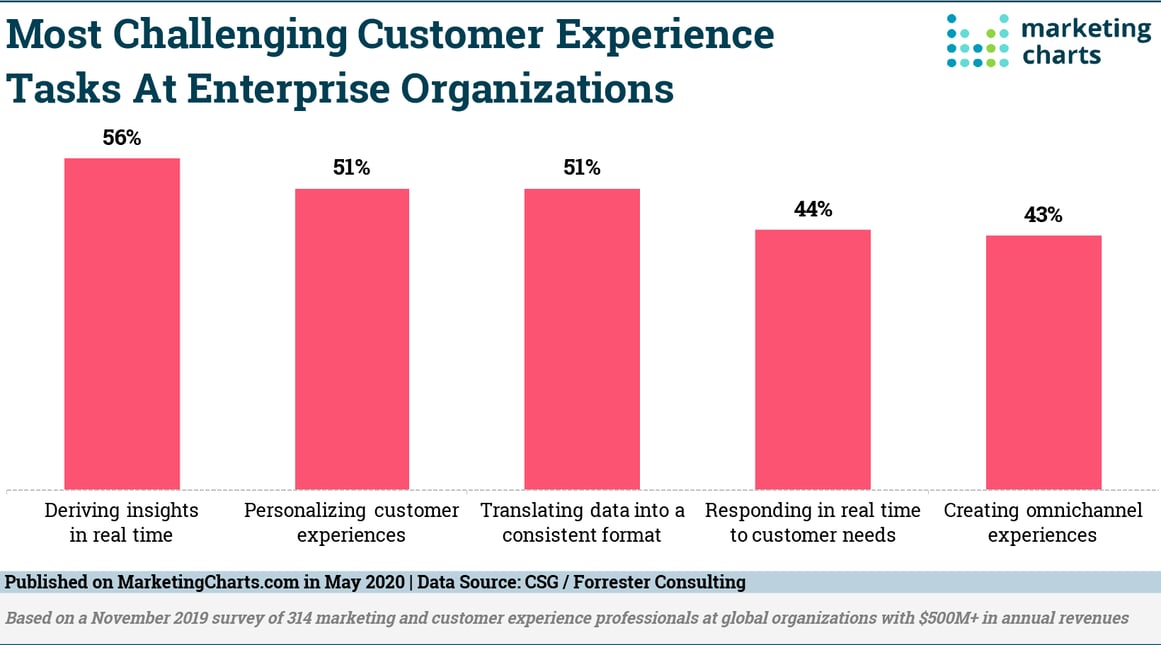This article will give you a brief overview of what customer experience (CX) is, why it’s important, and how to leverage data to boost your CX strategy.
Looking for an efficient way to visualize customer experience data across channels? Our consumer intelligence platform allows you to analyze your first-party data with social and market data to have a 360-degree picture of your customer.
Elevate your CX with Consumer Intelligence
Customer experience is all about the customer’s perception of a brand based on their experience with it and this experience can be defined by one or more multiple interactions between a brand and its customers over a period of time.
Businesses today have several touch points for interactions with customers – from your online/offline stores to the emails you send to your customers, content you post on social media, how calls are handled by customer service, and how satisfactory your product/service is – all these contribute to the overall CX and becoming a well-loved brand.
Why CX is important for businesses
It is without doubt that technology has created more access, convenience, and personalization for customers, leading to an increase in demand for a more consistent experience across brand touch points. This demand is so important that CX has become a key factor influencing purchase decisions alongside price and product quality.
Simply put, when the customer feels valued, businesses gain direct benefits including increased customer loyalty, higher price premiums, and positive reviews/recommendations, that will bring in new customers and increase revenue over time. On the other hand, a poor experience can lead to poor customer retention and according to a PWC survey, 32% of all customers would stop doing business with a brand they loved after one bad experience.
Due to its rather wide scope, however, it can be difficult to measure CX with a single metric or KPI as more often than not, these “interactions” or touch points fall on different functions within the organization, ultimately making CX a shared responsibility across departments – from Marketing to Sales, to Customer Service, and beyond.
The truth is that the customer journey is no longer a straight line, thanks to the multitude of touch points available. Businesses are then faced with large amounts of data that can also be overwhelming without the right tools and technology.
With different departments owning different touch points, which can lead to inconsistencies in the experience that each department is delivering, and perhaps more critically – gaps within your consumer insights.
According to MarketingCharts, some of the biggest CX challenges for enterprise organizations include being able to derive insights in real time and translating data into a consistent format – which should empower brands to gain insights from the data.
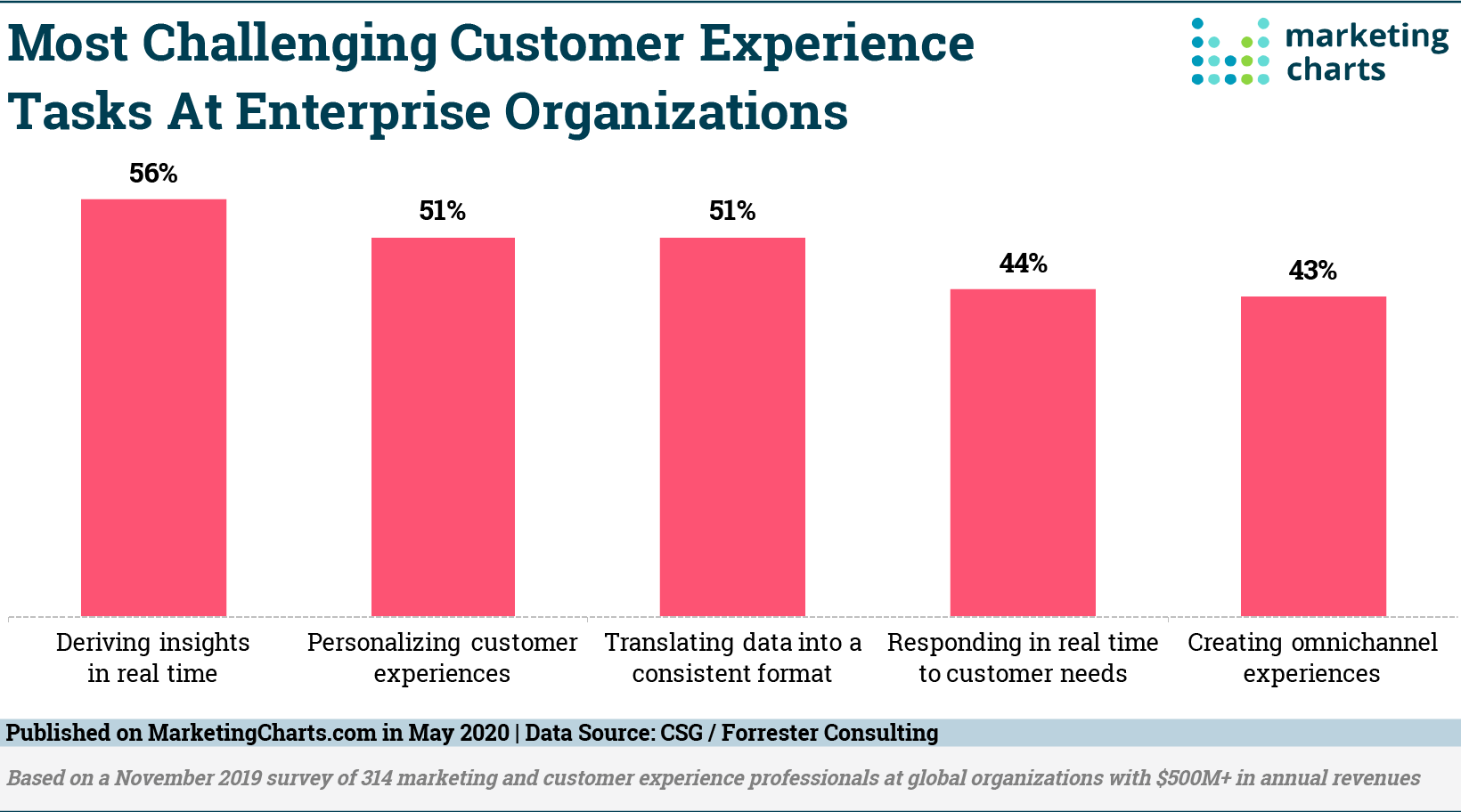
Source: MarketingCharts
Here are 3 ways to use conversational intelligence to boost CX strategy:
1. Track issues and evolving trends that matter to your customers
The digital landscape is constantly changing and it’s crucial for businesses to not just be able to monitor but also analyze conversations at scale to spot potential issues before they go out of hand, and to discover new trends that are shaping up in their respective industries.
Let’s take the e-commerce industry as an example, an industry that’s growing at a faster pace in 2020. We saw a shift in how people make purchases and to meet this demand, businesses turned to digital solutions.
The e-commerce industry generates hundreds of thousands of mentions month after month (and it’s still growing!) so we used Conversation Clusters to organize the information according to main themes and semantic similarity, to uncover issues and contextualize trends.
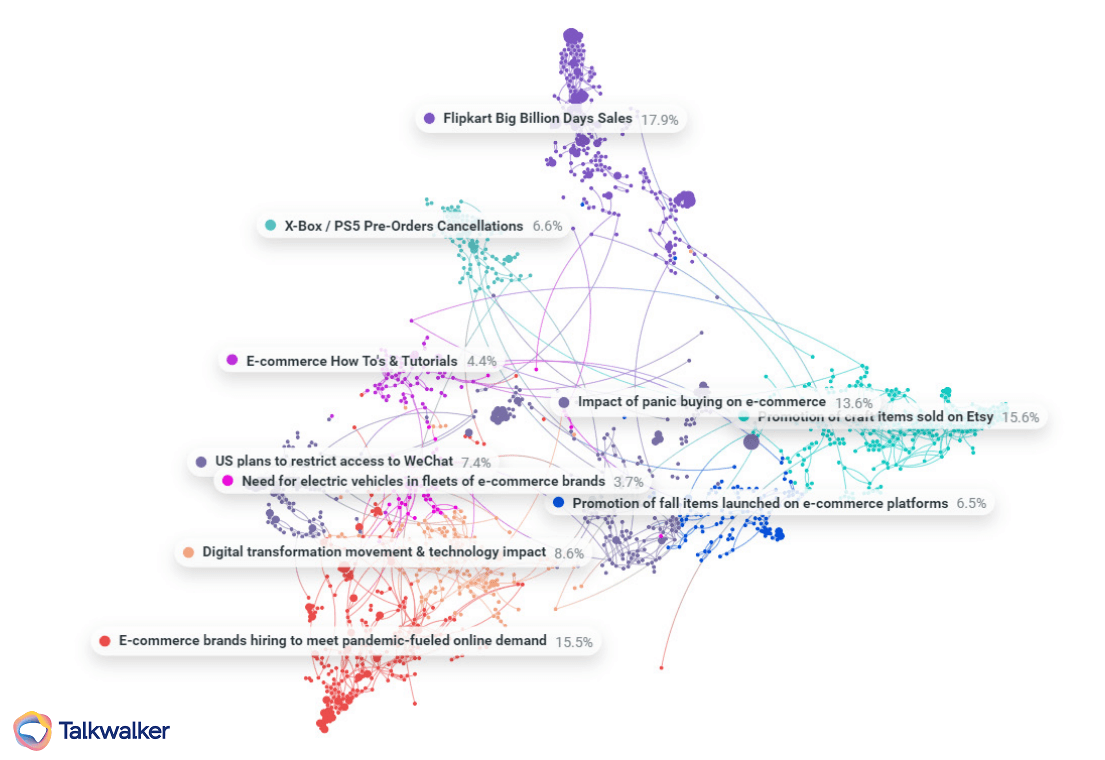
Source: Talkwalker E-commerce industry report
Based on social data between August to October 2020, businesses are looking into the need to increase operational capacity to meet the growing demand, as well as the importance of logistics/delivery aspects to fuel this demand.
“At a time where even the smallest of interactions between brands and consumers are happening online, it is key for companies to sift through large amounts of data and find the crucial conversations that will drive their strategies forward. Through social listening, a brand can understand their landscape, and define or tweak their strategy based on the voice of their consumers.” Source: E-commerce industry report
2. Understand how consumer behavior is evolving
When we look at the types of conversations surrounding e-commerce. Discounts make up a good chunk of what people are discussing. It’s no secret that e-commerce businesses offering discounts and promotions will potentially drive more customers to their store.
From the customer’s perspective however, it’s important to remember that the whole CX journey starts from the moment a prospective buyer lands on your website – or the moment they see your ad that will take them to your e-commerce store. The journey then continues as they go through your product selections, make a purchase, and receive the product.
A customer can have a super seamless experience on your website but with delayed arrival of their order or any mishandling on the delivery side, you can negate that initial positive buying experience and ultimately sway them away from going back to your store.
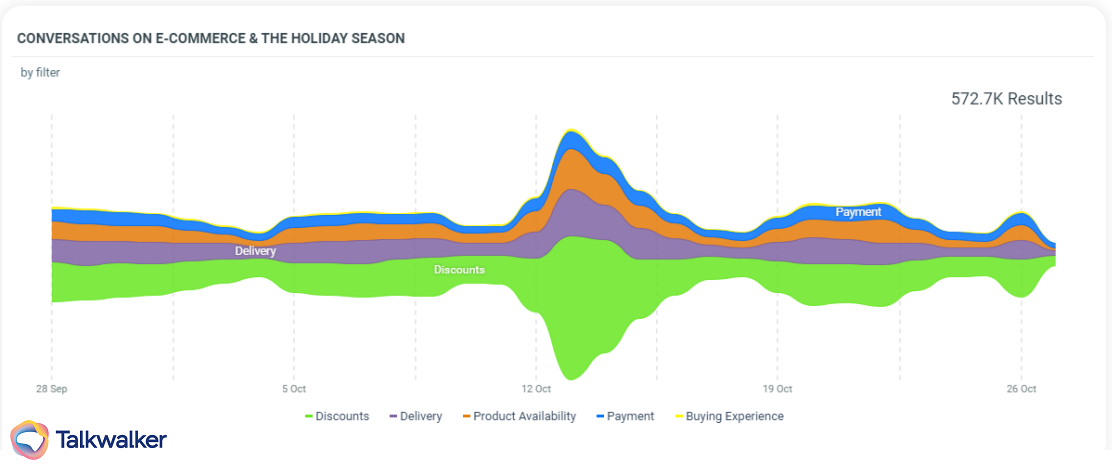
Main topics driving conversations within the e-commerce industry. Download the full report here
From a CX strategy standpoint, paying attention to the overall consumer demands and experience – from the UX of your store all the way to the post-sale experience – is key.
“The first step in exceeding your customer’s expectations is to know those expectations.” - Roy H. Williams, Best Selling Author and Marketing Consultant
3. Analyze customer sentiment across different touch points
Taking from the example (graph) above, we can already identify a handful of departments including sales/marketing, logistics, supply chain/merchandising, IT/operations, customer support – that should be involved in optimizing these areas:
- Discounts
- Delivery
- Product availability
- Payment
- Buying experience
Each department could be focused on specific channels and touch points that they own, which could be predisposed to certain feedback or issues that could drive positive or negative customer sentiment.
For instance, Customer Support teams are more prone to face negative customer sentiment. This is simply based on the nature of their organizational function and the reality that customers reach out to Customer Support when they have issues, not when they are satisfied.
On the other hand, we have social media that is an even bigger playground for direct and indirect consumer feedback that MarComm teams can leverage.
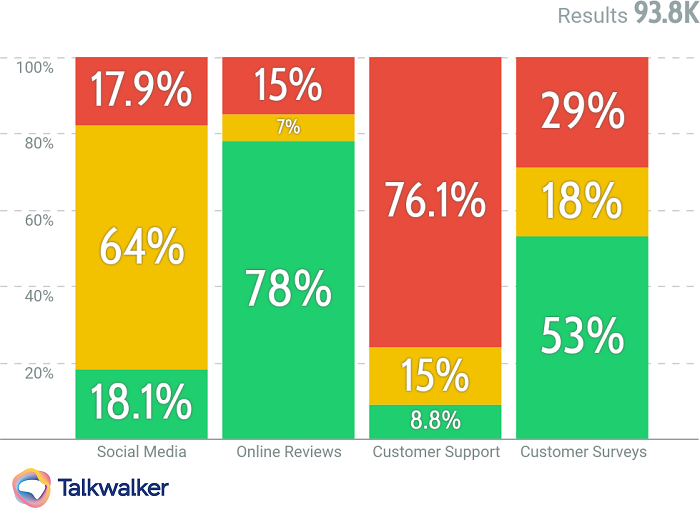
Sample Talkwalker insights - visualize customer data across channels
Conclusion
Great CX comes with a customer-focused approach and this begins with getting to know your customers inside and out. Starting from understanding the issues that matter to them and spotting emerging trends that influence consumer behavior. Then, by combining data from your first-party sources (e.g., customer support, surveys) and online sources (e.g., social media, reviews), you will get a holistic view – a single source of truth for your brand.
Consumer intelligence helps companies understand and analyze customer conversations at scale across all data sources to be able to make data-driven business decisions.


